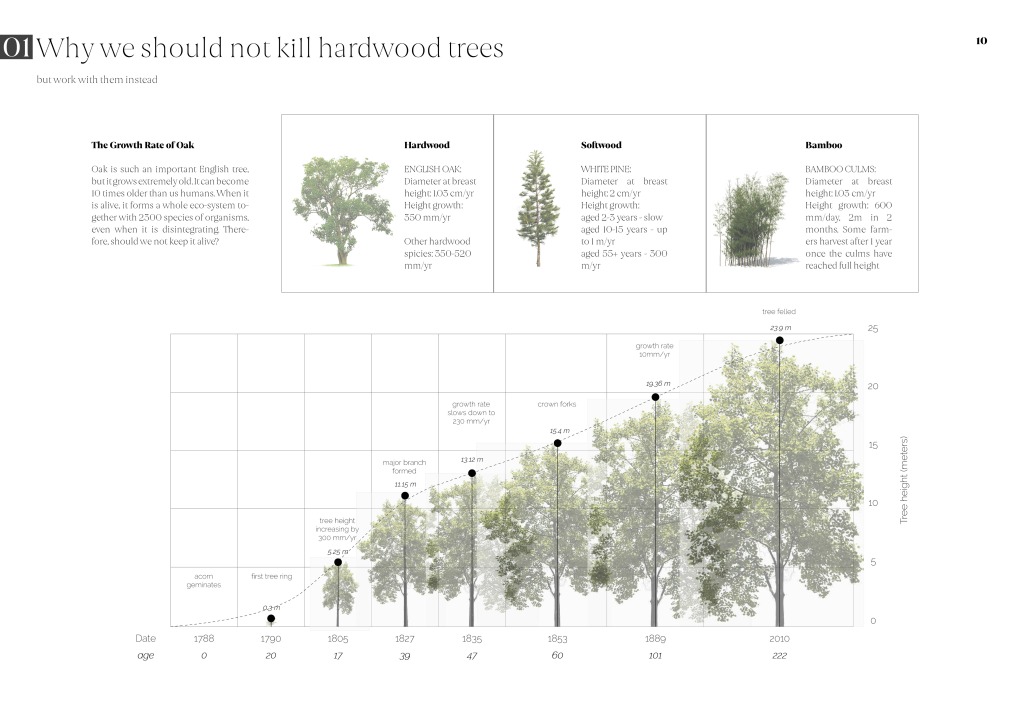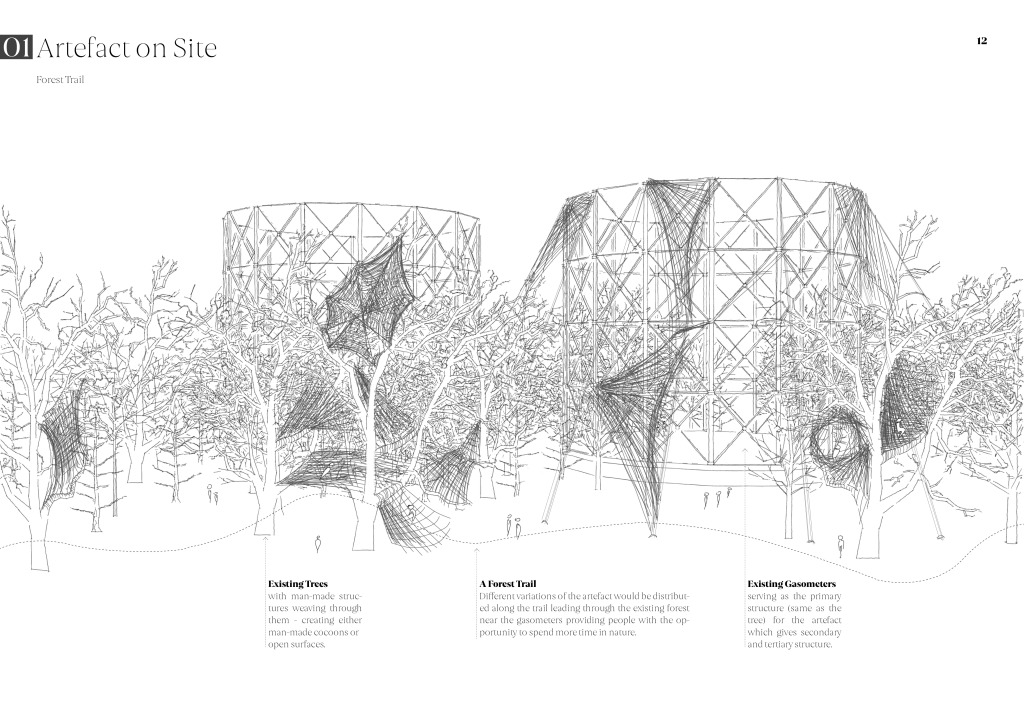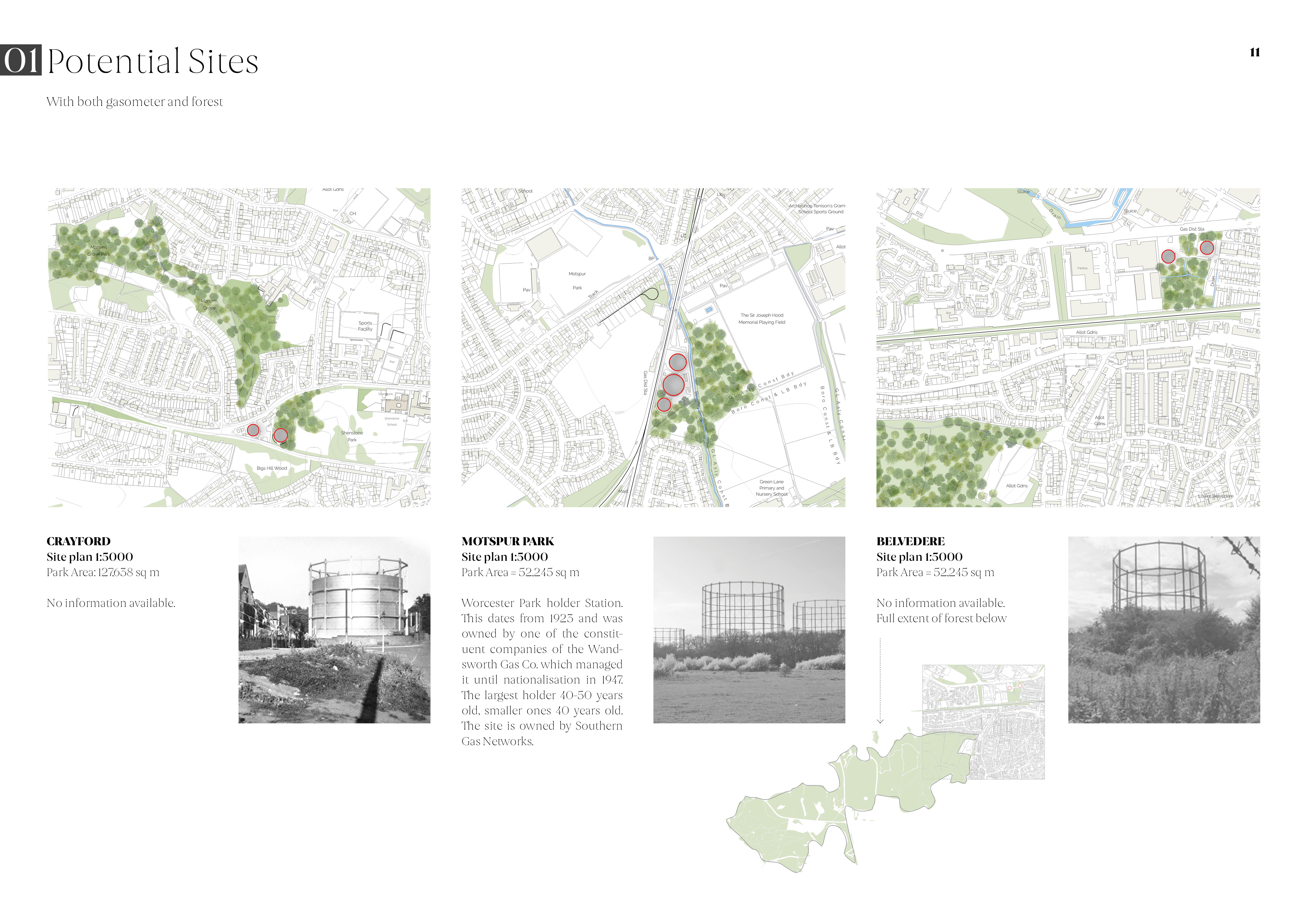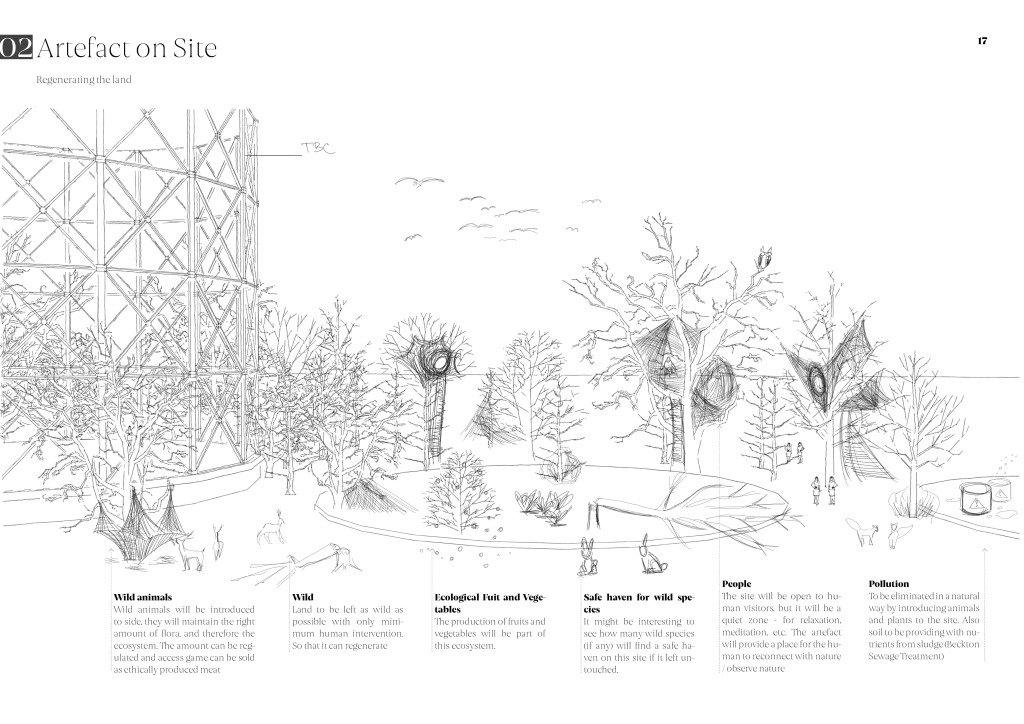A man-made cocoon woven from biodegradable rope material inspired by
the weaving of silkworms. It can be constructed in any softwood tree that
is strong enough and that has a convenient distribution of branches. The
tree is scanned and converted into a 3D model where a custom cocoon design
is created. The cocoon is both lightweight and strong as it is a tensile
structure (secondary structure) wrapping around a tree (primary structure).
It aims to bring people from the city closer to nature.

Trees & Humans
The following images will introduce my artefact into wider context. There are two possible scenarios, which could benefit from my artefact, one of which will be further developed in the upcoming term:
1) forest bathing as a way to for the human to reconnect with nature
2) rewilding as a way to both regenerate the land and human spirit

Photogrammetry
OBJECTIVE
The aim of photogrammetry was to create the most realistic three-dimensional representation of a tree, which could then be incorporated into computational experiments making the design process much more efficient.
LIMITATIONS
Photogrammetry generated about 60-70% of tree volume leaving out the detailed branches at the outer ends of the tree. 3D scanning would be a possible solution, however, unavailable at the moment.



Combining the Virtual and Real
REAL
3D-model of a real tree
VIRTUAL
wrapping/weaving around the 3D-model of a real tree virtually



Connecting points in space
OBJECTIVE
This section of my portfolio focuses on exploring the ways in which points can be connected with strings – in both two and three dimensions. The gained knowledge from this section informed my virtual weaving experiments (previous section)
LIMITATIONS:
When connecting regular geometries, it is much easier to find the differences between different connection techniques. The result looks also much more organised and neat. However, what I am aiming to do is apply these connection techniques to irregular geometries of trees, which is a big challenge.

Wrapping & weaving around real trees
This part tracks my learning of the weaving behaviour of silkworms. I have done my own weaving experiments, both physical and virtual to try and understand how weaved tensile structures work. Going forward, I would like to incorporate some of the observed physical principles into my design (into the Grasshopper script).













































































